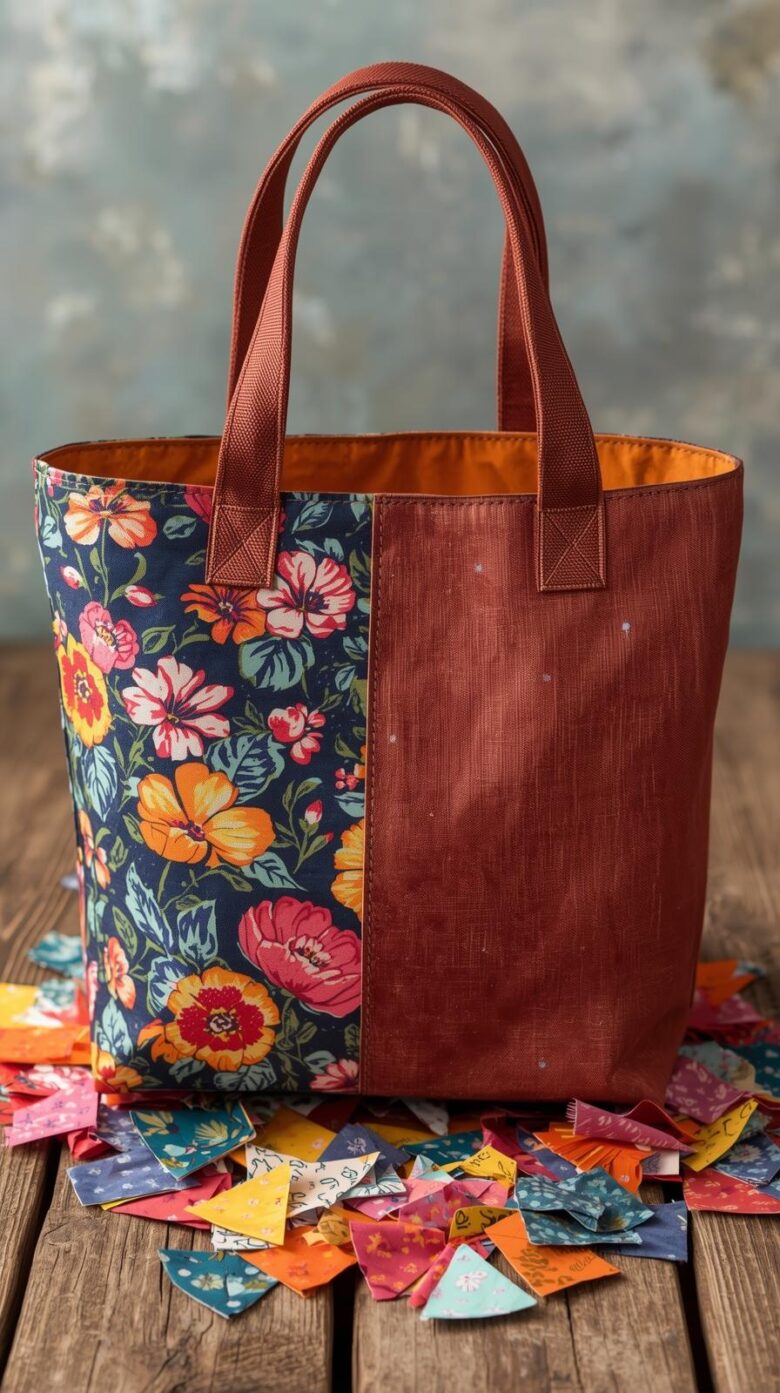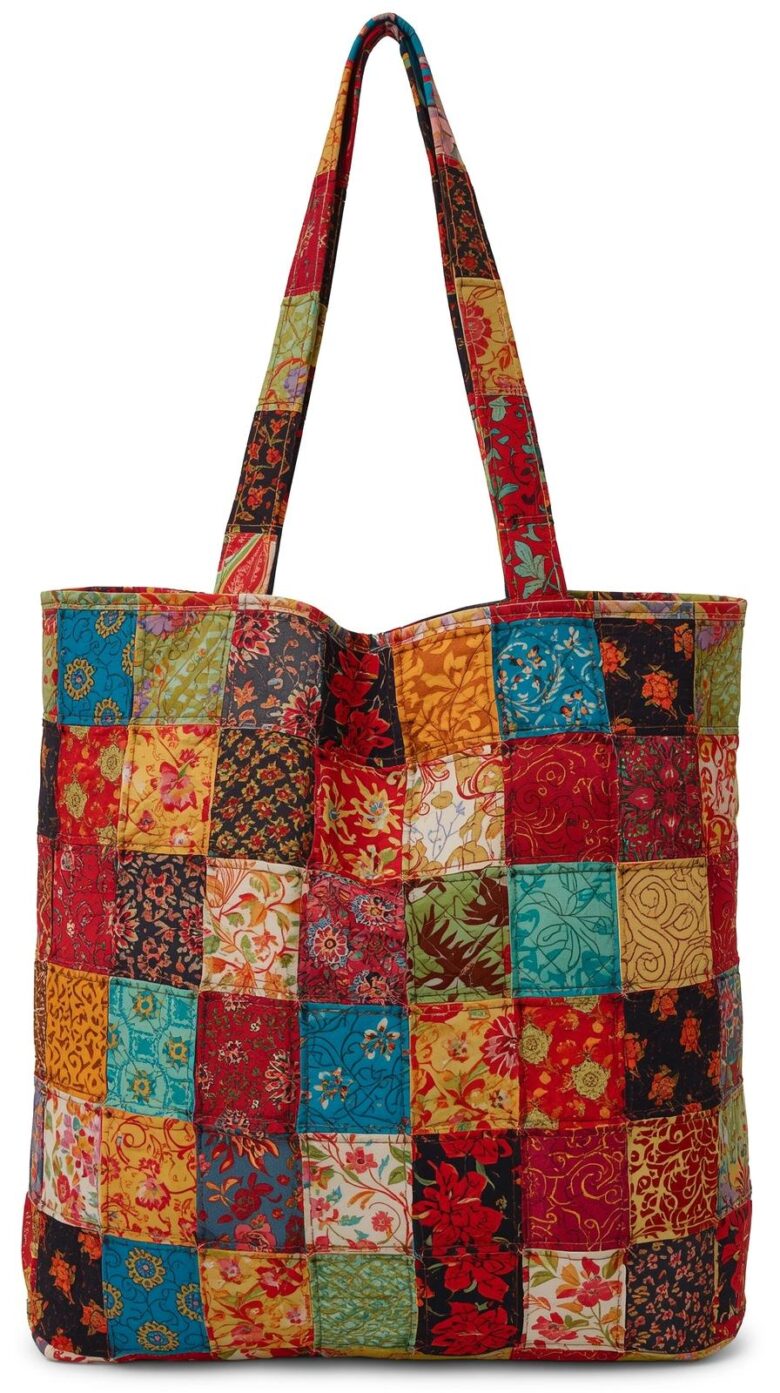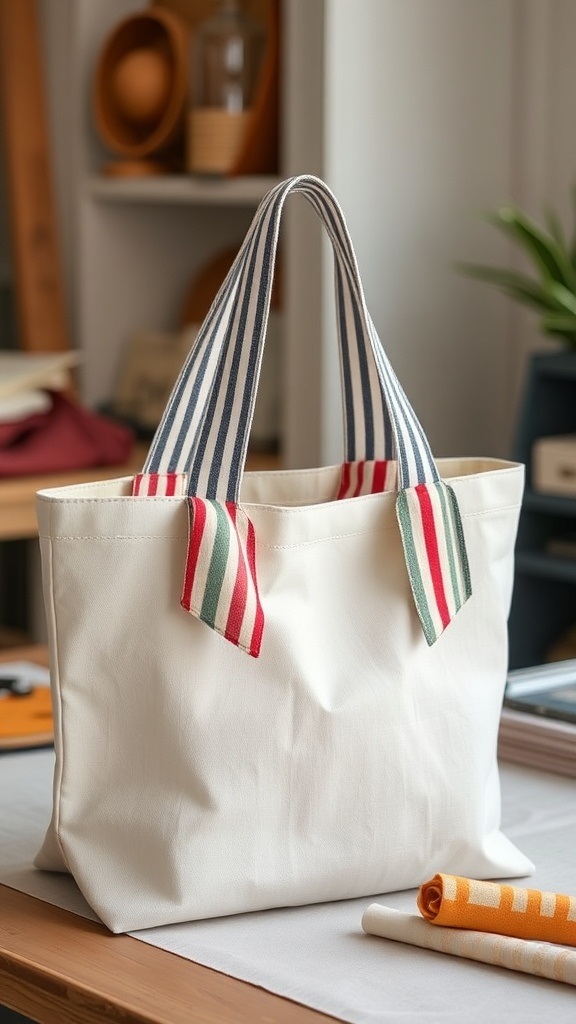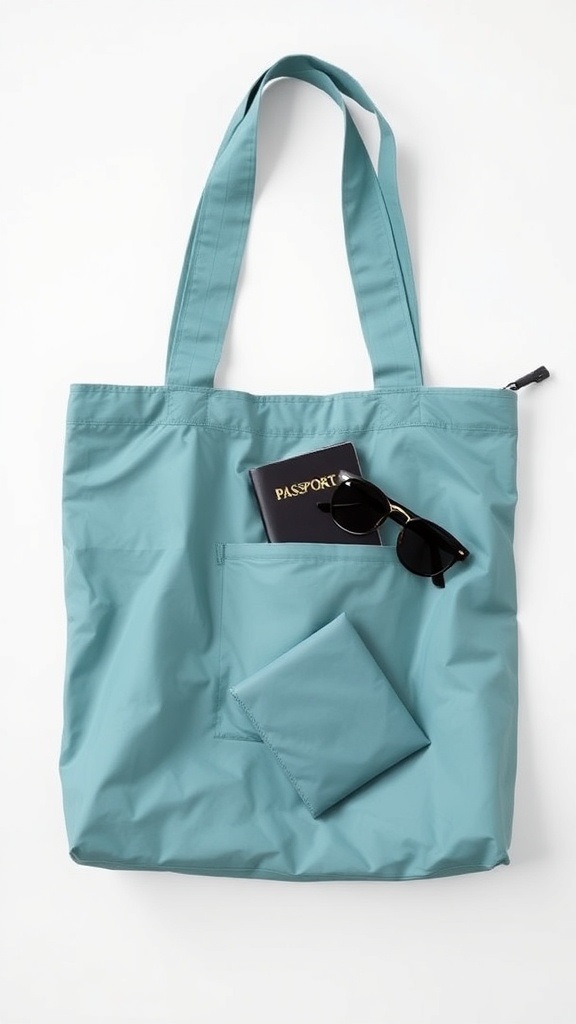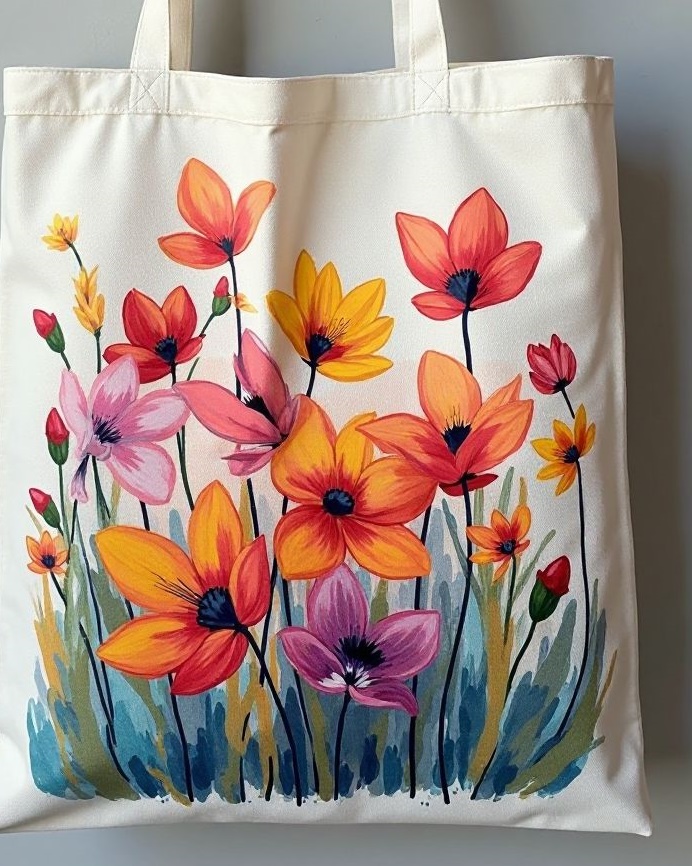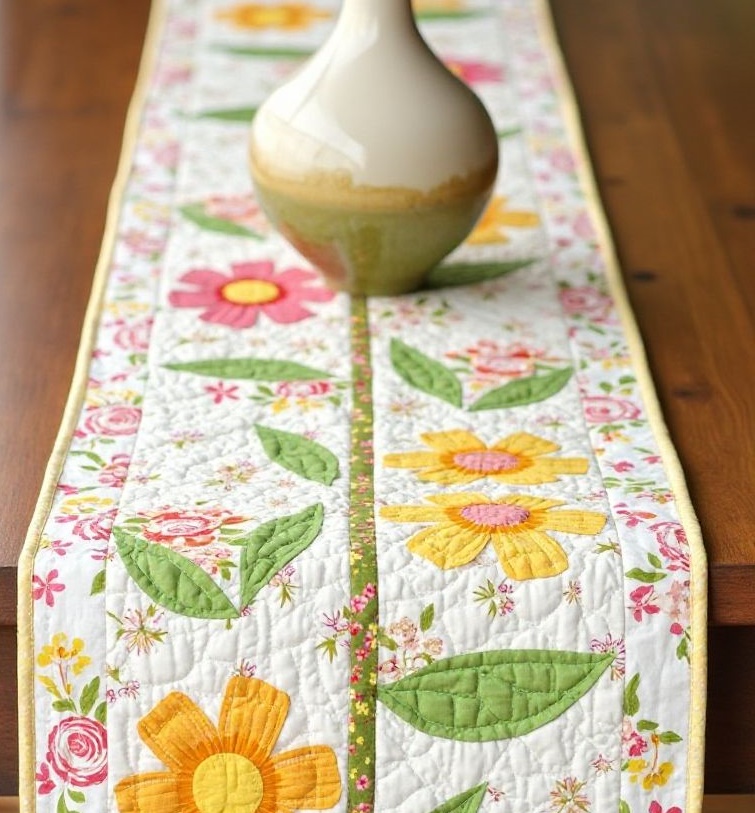I’ll be completely honest with you – my tote bag obsession started by accident. I was standing in the grocery store checkout line, juggling my phone, wallet, and keys while trying to balance a basket full of items, when I realized I’d forgotten my reusable bag at home again. That’s when I spotted a woman ahead of me pulling out this absolutely gorgeous handmade tote bag, complete with interior pockets and the most beautiful fabric pattern I’d ever seen.
That moment changed everything for me. I went home that night and started researching tote bag patterns, and within a week, I’d sewn my first one. It was crooked, the handles were slightly uneven, and I definitely learned the hard way why interfacing matters, but I was hooked.
Fast forward two years, and I now have a collection of handmade tote bags for every occasion imaginable. Beach bags, grocery shopping totes, work bags, gift bags – you name it, I’ve probably sewn it. The best part? Each one cost me less than $10 to make, compared to the $30-80 I would’ve spent buying similar bags in stores.
What really sold me on making my own tote bags was the incredible versatility. Need a bag that perfectly matches your favorite jacket? Done. Want something large enough for your laptop but stylish enough for weekend errands? Easy. Tired of bags that don’t have the right pocket configuration for your specific needs? Problem solved.
Plus, there’s something deeply satisfying about creating something functional and beautiful with your own hands. Every time I grab one of my handmade totes, I get this little surge of pride. It’s like carrying around a piece of my creativity wherever I go.
Basic Materials and Tools Needed
Before we dive into the fun stuff, let’s talk about what you’ll need to get started. The wonderful thing about tote bag sewing is that it doesn’t require a huge investment in specialized tools or expensive materials.
For fabric, I’ve learned that cotton canvas and cotton duck are absolute game-changers for tote bags. They’re sturdy enough to handle heavy loads but still easy to work with. Denim is another fantastic option – I love using old jeans for the body of bags and adding contrasting fabrics for accents. Linen creates beautiful, sophisticated-looking bags, though it wrinkles more easily.
Your basic tool kit should include sharp fabric scissors (this cannot be overstated – dull scissors will make you want to quit sewing altogether), pins, a seam ripper, measuring tape, and a good iron. A rotary cutter and mat will speed up your cutting process tremendously, but they’re not absolutely essential when you’re starting out.
Thread-wise, I usually go with heavy-duty thread for the construction seams since tote bags need to withstand some serious wear and tear. Regular all-purpose thread works fine for decorative elements and topstitching.
Don’t forget interfacing – it’s what gives your bags structure and helps them hold their shape over time. I use medium-weight fusible interfacing for most projects, though I’ll go heavier for bags that need extra stability.
Simple No-Pocket Tote Bag
This is where I always recommend beginners start, and honestly, it’s still one of my most-used patterns. The beauty is in its simplicity – just two rectangles, two handles, and you’re done.
I cut my main pieces 15 inches wide by 16 inches tall, which creates a nice everyday-sized bag. The handles are 3 inches wide by 22 inches long, giving you comfortable shoulder-carrying length. What I love about this basic design is how quickly it comes together – I can literally finish one during my lunch break.
The key to making this simple bag look polished is in the finishing details. I always add a French seam or serge the raw edges to prevent fraying, and I topstitch around the top edge for a professional appearance. Sometimes I’ll add contrasting thread for the topstitching just to give it a little extra personality.
Color Block Tote Bag
This is where things start getting really fun. Color blocking is basically my favorite way to use up fabric scraps while creating something that looks intentionally designed rather than random.
I typically divide my bag into three or four sections using different but coordinating fabrics. Maybe a soft gray for the main body, bright coral for the bottom panel, and cream for the top band. The trick is choosing colors that work well together – I often use the 60-30-10 rule from interior design, where one color dominates, another provides contrast, and a third adds accent.
The construction is almost identical to the simple tote, but you’re sewing your color blocks together before assembling the bag. I always press my seams open to reduce bulk, and I love adding decorative topstitching along the color block seam lines.
Reversible Tote Bag
Oh my goodness, reversible bags were a complete game-changer for me. It’s like getting two bags for the price of one, and they’re surprisingly easy to make once you understand the technique.
I choose two fabrics that coordinate but offer different vibes – maybe a floral print paired with a solid color, or a bold geometric pattern with a subtle stripe. The construction involves sewing two complete bags and then joining them at the top edge in a way that allows you to flip between the two sides.
The trickiest part is getting the handles positioned correctly so they work well on both sides, but once you’ve done it a few times, it becomes second nature. I love having a dressy side and a casual side, or a work-appropriate pattern and a fun weekend print.
Tote Bag with Zipper Closure
Adding a zipper to a tote bag was intimidating at first, but now I wonder why I waited so long to try it. There’s something so satisfying about having a bag that actually closes securely, especially when I’m traveling or carrying important items.
I use a 14-inch zipper for most of my totes, and I’ve learned that investing in good-quality zippers makes a huge difference in the finished product. The installation process involves creating a boxed top opening, which also gives the bag a more structured, professional appearance.
The best part about zippered totes is the security factor. I can throw my bag over my shoulder and not worry about things falling out, which is especially great when I’m cycling or walking in crowded areas.
Patchwork Tote Bag
This is my absolute favorite way to use up fabric scraps, and the results are always unique and eye-catching. I collect fabric pieces throughout the year – leftover bits from other projects, sample fabrics, even pieces from worn-out clothing that I love too much to throw away.
For patchwork bags, I usually work with squares or rectangles rather than trying to piece together random shapes. A grid of 4-inch squares creates a nice balanced look, and I can play with color placement to create patterns or gradients.
The key is pressing every seam as you go. It’s tedious, but it makes the difference between a patchwork that looks messy and one that looks intentionally designed. I also like to add extra interfacing to patchwork bags since all those seams can make the fabric a bit less stable.
Tote Bag with Exterior Pockets
Exterior pockets are one of those features that seem unnecessary until you have them, and then you wonder how you ever lived without them. I love having a designated spot for my phone, keys, or a water bottle that I can access without digging through the main compartment.
I typically add two pockets to the front of the bag – one sized perfectly for a phone and another that’s great for keys or lip balm. The construction involves attaching the pockets before assembling the main bag, and I always reinforce the pocket openings with extra stitching since they get a lot of use.
For a fun design element, I sometimes use contrasting fabric for the pockets or add decorative topstitching around the edges. It’s these little details that make handmade bags look thoughtfully designed rather than homemade.
Tote Bag with Striped Handles
I discovered this technique completely by accident when I ran out of my main fabric and had to get creative with scraps. Now it’s one of my signature design elements because it adds so much visual interest to an otherwise simple bag.
The striped handles are created by cutting strips of different fabrics and sewing them together before cutting out the handle pieces. I love using three different fabrics – maybe two prints and one solid, or three different shades of the same color family.
The construction takes a bit longer since you’re essentially making your own fabric for the handles, but the results are so worth it. These handles make even the simplest tote bag look custom and thoughtfully designed.
Foldable Tote Bag for Travel
This pattern was born out of pure necessity during a weekend trip when I suddenly needed an extra bag for souvenirs. Foldable totes are incredibly lightweight and compact, making them perfect for travel, emergency shopping trips, or just keeping in your car for unexpected needs.
The key to a good foldable bag is choosing lightweight but durable fabric. Ripstop nylon is fantastic for this application, though cotton voile or lightweight canvas also work well. The bag folds into its own small attached pouch, creating a package about the size of a sandwich.
These bags sew up incredibly quickly – I can make one in about 45 minutes from start to finish. They’re also great gift items because everyone needs an emergency bag, and they take up virtually no storage space.
Personalized Tote Bag with Appliques
Applique work is where I really get to let my creativity run wild. There’s something so satisfying about adding dimensional elements to a bag that transform it from functional to truly special.
I love doing simple shapes – flowers, leaves, geometric designs, or even letters for monogramming. The technique involves cutting shapes from contrasting fabric and stitching them onto the bag body before final construction. Raw-edge applique has a casual, modern feel, while turned-edge applique looks more polished and traditional.
For beginners, I recommend starting with simple shapes and working your way up to more complex designs. Iron-on fusible web makes the process much easier by holding your applique pieces in place while you stitch.
Eco-Friendly Recycled Fabric Tote
This is probably my most meaningful category of bag making because it gives new life to materials that might otherwise end up in landfills. I’ve made gorgeous bags from old curtains, worn-out clothing, fabric samples, and even vintage linens that were too damaged for their original purpose.
Vintage sheets make surprisingly beautiful tote bags, especially the ones with retro prints that you can’t find in modern fabrics. Old jeans are perfect for sturdy market bags, and I love combining different washes of denim for visual interest.
The challenge with recycled fabrics is working around existing seams, stains, or worn areas, but that’s also part of the creative fun. Sometimes these limitations lead to design solutions I never would have considered otherwise.
Care Tips for Handmade Tote Bags
Taking care of your handmade bags properly will help them last for years and continue looking great. I’ve learned through trial and error which techniques work best for different types of bags and fabrics.
For most cotton bags, I machine wash in cold water and air dry to prevent shrinking and fading. I turn them inside out before washing to protect any decorative elements. Bags with interfacing should never go in the dryer on high heat, as it can cause the interfacing to bubble or separate.
For bags with appliques or delicate trims, I hand wash or use the gentle cycle and always air dry. I’ve found that stuffing the bags with towels while they’re damp helps them maintain their shape as they dry.
Regular maintenance makes a huge difference too. I spot clean stains as soon as they happen, and I give my most-used bags a thorough cleaning every few months. A lint roller works wonders for removing pet hair and surface debris between washes.
The best part about making your own tote bags is that even with regular use and washing, you’ll have created something durable and personal that reflects your own style. Each bag becomes a little piece of functional art that makes everyday tasks just a bit more enjoyable.
Whether you’re a complete beginner or an experienced sewer looking for quick, satisfying projects, these tote bag patterns offer endless possibilities for creativity and customization. Start with the simple designs and work your way up to more complex techniques – before you know it, you’ll have a collection of beautiful, functional bags that perfectly suit your lifestyle and aesthetic preferences.



